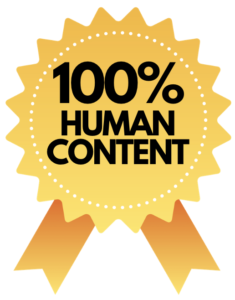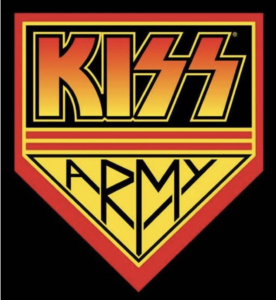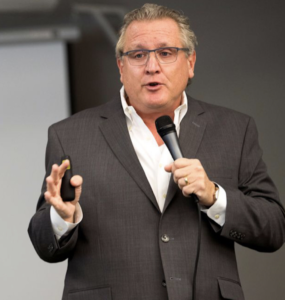
I was recently a guest on the James Kennedy podcast and James, who fronts a UK rock band, issued a challenge. He wanted me to explain marketing to his audience of musicians in five minutes.
Cool. Challenge accepted.
I transcribed my answer on the show, and I hope it helps you (with some editing for brevity and clarity).
Describing the marketing process in five minutes or less? I don’t think I’ve ever done this before. So here we go.
Marketing is about creating customers
Number one, what is marketing?
Marketing is the process of creating a customer. Underneath that goal, there’s a lot of important activity — you have to understand what your customers like and where they are, what’s going on in their lives, and how much money they have, studying the competition … but essentially, it’s an activity centered on creating a customer. For musicians or artists, it’s creating a fan who is going to buy your work or attend your shows.
Now, there are two different kinds of marketing, and this is where a lot of people get confused.
One is direct marketing. So this would be if you go into a store and you see a coupon for Coca-Cola. They need to move more product, so they issue a coupon. They’ll sell more stuff, and it’s pretty easy to measure. You create coupons … you sell more stuff. That’s called direct marketing, or sometimes performance marketing that is tied to certain short-term sales goals.
That’s not so relevant to artists and musicians. I mean, I’m imagining you’ve probably never had a sale. You probably never said, “Hey! It’s Boxing Day. We’re going crazy. Two for one special on our music!” I mean, that’s not how it works, right?
Brand marketing for the arts
 Now, here’s what does work for artists. This is the second kind of marketing, and that’s called brand marketing. So let’s go back to the Coca-Cola example. I gave a speech in Poland before the pandemic, and it was huge, with thousands of people in this audience. And I said, “when you think of Coca-Cola, what do you what do you think of?” Sort of a rhetorical question, but somebody from the audience yelled out, “polar bears.”
Now, here’s what does work for artists. This is the second kind of marketing, and that’s called brand marketing. So let’s go back to the Coca-Cola example. I gave a speech in Poland before the pandemic, and it was huge, with thousands of people in this audience. And I said, “when you think of Coca-Cola, what do you what do you think of?” Sort of a rhetorical question, but somebody from the audience yelled out, “polar bears.”
Even in Poland, they think of Coca-Cola as polar bears. Why? Why does Coca-Cola do that? Because they don’t want you to think about high-caloric sugar water, right? Brand marketing creates an expectation of certain feelings when you interact with this product. It’s supposed to make you warm and friendly and happy, and you share it with family, it’s associated with happy special occasions, and you drink it on the beach. That’s Coca-Cola. It’s a brand feeling that you expect. Now we’re getting somewhere.
Creating a distinctive emotional connection
So the key to marketing for a musician or an artist is to create a feeling that you expect, and then you have to deliver on that feeling every time. That feeling connects you to your audience in a meaningful way.
That’s why some people might like Taylor Swift, and some people might like Radiohead, and some people prefer Ozzy Osbourne. They’re completely different feelings and completely different expectations. While the brand marketing is different, the goal is always the same — create a feeling that connects to you in some authentic and organic way.
So here we are. Our job as a musician is to create meaning, a feeling that connects us to our audience, and that makes us distinctive. That creates loyalty as long as you deliver on that promise.
Trouble can start when you confuse your audience. So let’s say you’re a rock artist, and all of a sudden, you decide to create a country album. Now, you’re going to lose a lot of people because the expectation — your promise — has been breached.
The good thing about the world today is that every person and every artist has an opportunity to meet directly with their fans through all kinds of different social media outlets. We don’t have to worry about gatekeepers. We don’t necessarily have to pay advertising agencies; we just have to show up in a human way that’s consistent with our brand.
That’s generally going to be consistent with who artists are anyway … with the possible exception of a band like KISS. Then all bets are off. But for most singer-songwriters, you’re going to be congruent as you take people along with you on your journey and let them in on what you’re creating.
The purpose of community and the arts
Now we’re going to connect the dots in another way. Let’s talk about artists and community.
Most artists are naturally doing something on social media. Social media is cool because it gives you the opportunity to connect to people who have never heard of you before and create a drip, drip, drip of content for fans. So you can reach a vast new audience.
But it’s a weak relational link. I have 180,000 followers on Twitter. If I post on Twitter, “Hey, everybody, I’ve got a new book,” or, in your case, you have a new album out. How many people will buy it? Almost none, because social media can be like throwing a message in a bottle out into the ocean. Right?
Of course there are always exceptions, but in general, social media is ephemeral. The people are there and the connection is possible. But I mean, is it really going to connect with people in a sustained way? So the strategy is to take them to the next step, which is moving them to your audience.
So do you have some content they can subscribe to? A blog, a podcast, a video series, an Instagram account. Now, it’s no longer throwing a bottle in the ocean. It’s reliable reach. When people subscribe to your content, your fans are saying, “I love you. I want to hear from you. I want to know everything about you.”
And now you’ve got an audience and there is a much stronger relational link. If you say, “I’ve got a new album out,” they’re gonna buy a lot of albums, right? So the strategy is to create this brand, connect on social media, but then gather the social media connections into an audience. Encourage them to subscribe. Create a list of people you can reach directly.
The ultimate step for marketing for the arts
Now, unfortunately, this is where most businesses and most artists stop. The next step is to create community — The ultimate emotional connection.
 Let’s use KISS as an example. Yes, they’ve got the brand. They’re on social media. They have an audience, obviously. But they’ve also got the KISS Army. Now, here’s the difference: In an audience, it’s a cult of personality. If you go away or the content goes away, the audience goes away. But in a community, people know each other. There’s communion. There is a purpose bigger than the music.
Let’s use KISS as an example. Yes, they’ve got the brand. They’re on social media. They have an audience, obviously. But they’ve also got the KISS Army. Now, here’s the difference: In an audience, it’s a cult of personality. If you go away or the content goes away, the audience goes away. But in a community, people know each other. There’s communion. There is a purpose bigger than the music.
It’s like, look at my KISS t-shirt. Look at my KISS stickers. Oh my gosh, they’re on their final tour, and we all have to go! And so it’s like a neighborhood of friends. You can imagine it’s the same for The Grateful Dead, Taylor Swift, and other artists that have true communities.
And here’s the interesting thing that I found in my research. My new book is called “Belonging to the Brand: The Last Great Marketing Strategy.”
We’re blocking ads. We’re in a streaming economy. We don’t want to be manipulated by marketing.
But we need community. We don’t just want community. We need community to be fully human beings. This is the only kind of marketing that people actually want. So the key, the ultimate goal for an artist, is to bring fans into a community.
For an artist, a community provides an opportunity to share behind the scenes, provide exclusive content, and engage directly with members. This is the surest way of creating organic advocacy.
Once people become friends in a community, they’re never going to leave you because that means they would have to leave their friends, right? They literally belong to the brand. Or, in your case, they belong to the band!
I’ve been talking about music, in general, but this is also applicable to an artist, a dance company, a symphony, or writers. The aim is community.
Community creates a layer of emotional switching costs. They’ll always be loyal to you because that’s where their peeps are. That’s where their friends are. And then it’s the most powerful kind of marketing there is.
So there you go. That is an artistic marketing strategy in five minutes.
 Mark Schaefer is the executive director of Schaefer Marketing Solutions. He is the author of some of the world’s bestselling marketing books and is an acclaimed keynote speaker, college educator, and business consultant. The Marketing Companion podcast is among the top business podcasts in the world. Contact Mark to have him speak at your company event or conference soon.
Mark Schaefer is the executive director of Schaefer Marketing Solutions. He is the author of some of the world’s bestselling marketing books and is an acclaimed keynote speaker, college educator, and business consultant. The Marketing Companion podcast is among the top business podcasts in the world. Contact Mark to have him speak at your company event or conference soon.
Follow Mark on Twitter, LinkedIn, YouTube, and Instagram.
Illustration courtesy MidJourney


